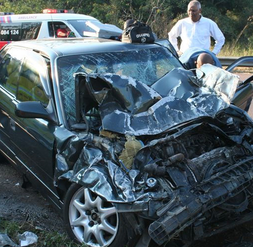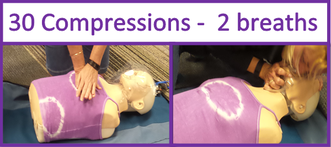|
This is one of those topics that always creates a big discussion especially for certain industries that are at potential high risks for injuries, but in general there will be a level of anxiety for this potential situation. What is it?Crush injury
What can cause it?High risk workplaces are especially prone to these injuries. Some possible things that could cause a crush injury are, forklifts, machinery, sheets of glass or metal, falling objects on a building site, girders, train accidents, being hit by a car or even trapped in one, trucks, semi-trailers, when natural disasters happen, such as building collapses and mud or earth slides, even someone's own body weight when unconscious, in the farming industry, motor bikes & Quad bikes, brick walls, trenches, crowds & this list could go on & on but I'm sure you got the idea. ManagementOften the first thought is for the casualty & a quick response time but you also need to make sure that you & others will be safe. Ensuring that there is no risk is imperative & the consequential management or elimination of those dangers. Call for help 000/112 asap. Now this is where most people start to get twitchy. If it is safe & is physically possible, get that crush object removed as quickly & safely as possible. Of cause some things are just not going to be possible to remove unfortunately. When the casualty has a weight affecting their head, neck, chest or abdomen this can affect their breathing & as we always say in first aid "No Air No Life" so this must be removed as promptly as you can. Manage any bleeding that also might be associated & keep monitoring their vital signs, keeping them as calm as possible, especially watching for shock as this is inevitable at some degree after such a traumatic event. Never leave them or use a tourniquet for the management of a crush injury as this can exacerbate their condition. A casualty who has been involved in a crush situation may not even complain of pain or there might not even be any external signs of the injury however anyone subjected to a crush injury should be assessed by professionals in a hospital setting for ongoing reassessment or deterioration. Also consider the casualties' chances of sustaining some sort of spinal injury where it is essential to minimize or even immobilize as much as possible to reduce the chances of further damage to the spinal cord & vertebrae. If the casualty is unresponsive (unconscious & not breathing normally) at any time then of course we would initiate CPR irrespective of injuries or suspected spinal condition otherwise they have no hope at all. :(
2 Comments
Zoe Jolly
23/9/2021 03:40:07 pm
Thank you for your comment Riley Dry, Much appreciated and we are so pleased that you found our article valuable. Take care. Zoe
Reply
Leave a Reply. |
AuthorI'm all about educating those who have completed a First Aid Course & those that haven't....... You can B-The one to make a difference so B-Ready! Archives
February 2018
Categories |
We Would Love to Have You train with us!
HoursOffice hours
M-Th: 9am - 5pm F: 9am-4pm |
Telephone |
|



 RSS Feed
RSS Feed


